Shochu is a beloved spirit within Japan. Outside of the country, it remains mysterious and hard to get.
This article will answer the most fundamental questions about what shochu is, what it isn’t, and where you can find some.
Shochu Fundamentals
If you want to understand shochu in more detail, the answers to the following questions will help.
What is Shochu?
Shochu is a native Japanese spirit. Quality shochu uses a koji-based fermented mash, and after fermentation, it is once distilled. Many ingredients are permitted, but rice, barley, and sweet potato are the most traditional and common. The flavor of these ingredients is prominent in shochu.
Shochu distilled multiple times is a newer variation. The result is a neutral spirit similar to a soft-textured vodka. Though it’s shochu in name, this industrial form is not what most think of when referring to shochu.
Traditional, once-distilled shochu is called honkaku (hawn kah kuu) shochu. When distilled multiple times, it’s often called korui (koh ruu ee).
What is Shochu Made of?
Over 50 ingredients are allowed for shochu production. By far, the most common are rice, barley, and sweet potato. Sake lees (kasu), buckwheat, and brown sugar are also regularly used. The primary ingredient all quality shochus share are koji, yeast, and water.
We’ll discuss the variable ingredients like rice, sweet potato, and buckwheat later. First, let’s dive into koji.
Koji and Shochu
Koji, genus Aspergillus, is a mold that converts starch into fermentable glucose. There are three types of koji commonly used for shochu and awamori production: black, white, and yellow.
Black and white koji are the typical choices of shochu distillers. Yellow koji is more closely associated with sake brewing.
Other Important Ingredients Used to Make Shochu
Yeast and water are also necessary shochu ingredients. Yeast converts glucose (sugar) into alcohol. Water activates the yeast and is the medium that allows yeast to move freely.
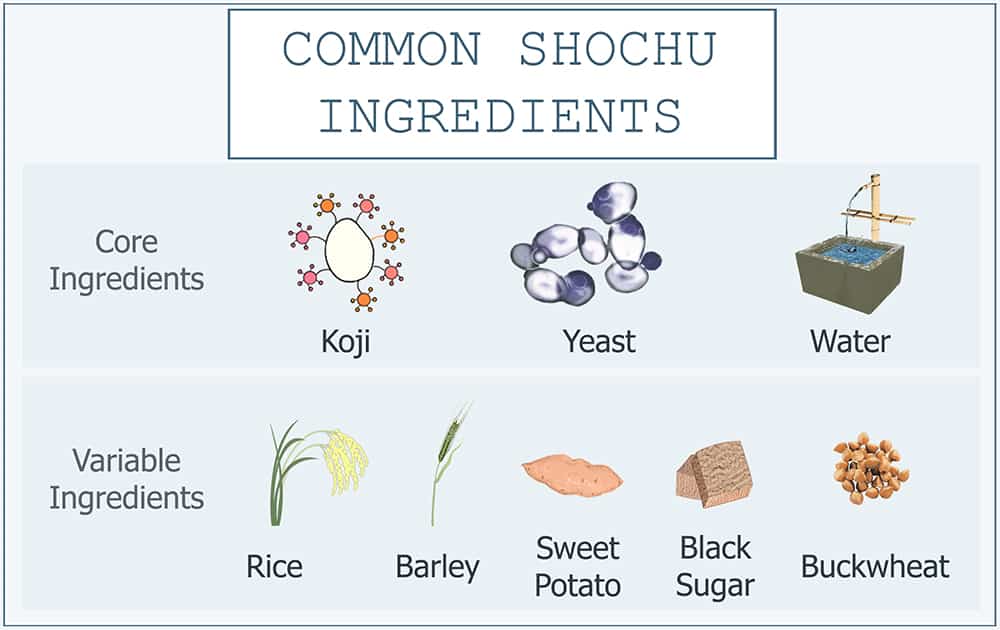
How is Shochu Made?
Shochu production starts with steamed ingredients inoculated with koji. The koji converts starch into sugar, which can then be turned into alcohol by yeast. After fermentation, the alcoholic solution is placed in a pot still and distilled once. Water is typically then added to cut the shochu to a palatable strength.
What About Korui Shochu?
Multiple-distilled korui shochu is a more industrial process. Koji is not always used either. A continuous column still turns the fermented alcohol into a high-strength (96% abv) spirit. It’s then diluted down to 36% abv or less. This is not much different than vodka production.
What are the Different Types of Shochu?
Once-distilled (honkaku) and multiple-distilled (korui) are the two primary types of shochu. Honkaku shochu tends to be complex and has a lot of flavor from its ingredients. Korui shochu has much less variation and often tastes like soft, light-bodied vodka.
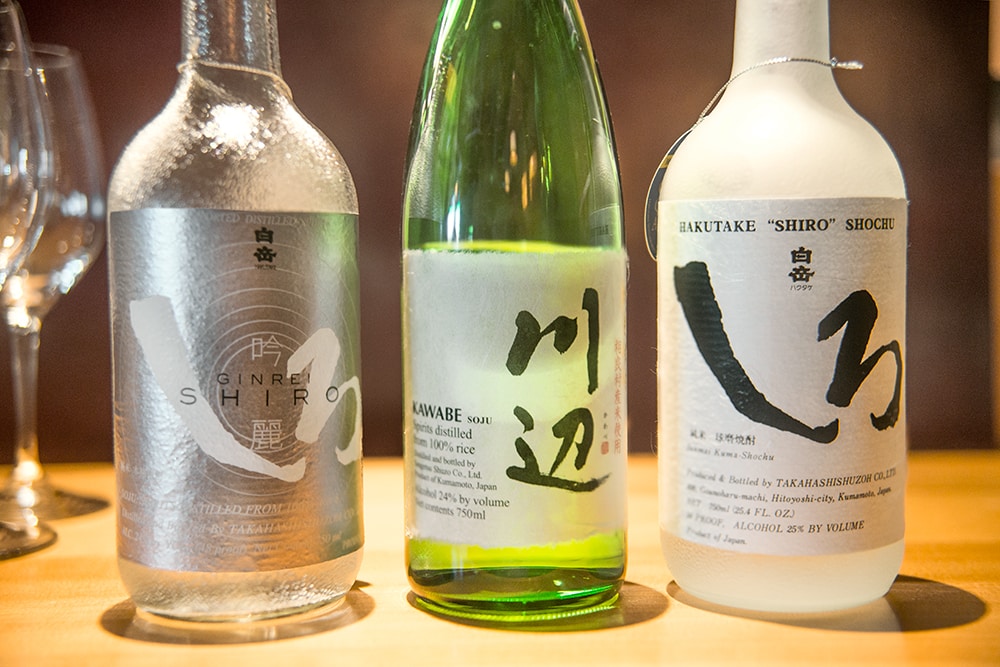
Rice Shochu: Kome 米焼酎
If you distilled sake, you would get rice shochu. It tends to be light-bodied, fruity, floral, and clean. Rice shochu is also often elegant and mellow.
Kumamoto is the most famous prefecture for rice shochu. And the Kuma region, located in the Hitoyoshi Basin, is where most of the distilleries are located. This is because the Hitoyoshi basin has an excellent climate for growing rice.
Kome (koh meh) is “rice” in Japanese. Rice shochu is therefore called kome-jochu.
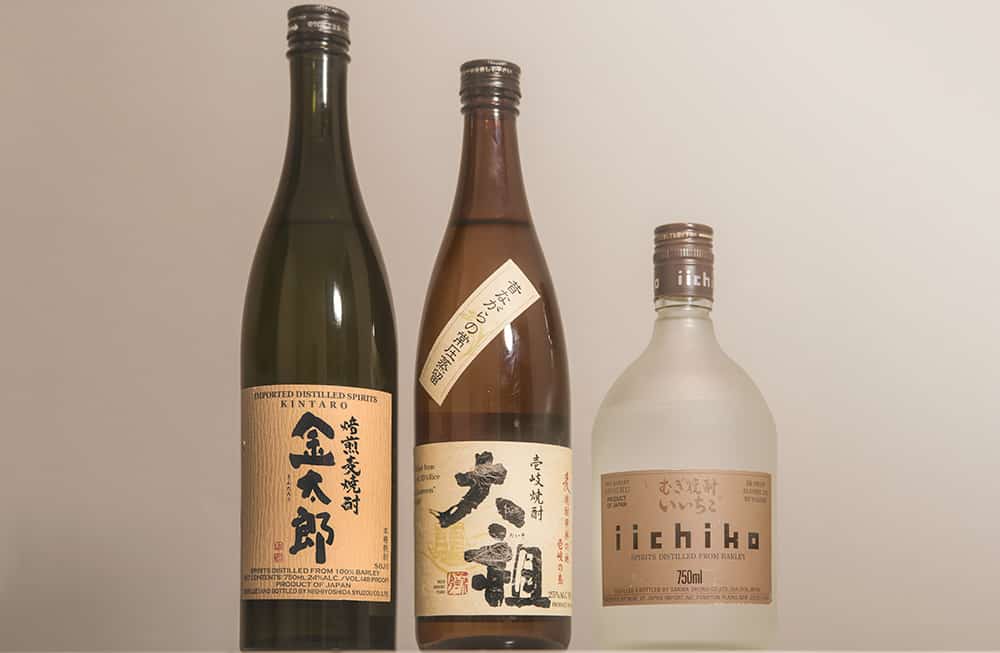
Barley Shochu: Mugi 麦焼酎
Barley shochu, like rice shochu, is often fruity, mild, and clean. There is some variation, however.
Distillers mill their barley like sake rice. Milling makes barley shochu taste fruitier and lighter. In Iki Island of Nagasaki, shochu makers use two-parts barley to one-part rice. Their shochu is robust and earthy in flavor. In Oita, distillers often use 100% barley for their shochu. This shochu is often lighter and fruitier than those from Iki Island.
Finally, barley shochu, like whisky, can be aged. This adds color and flavors from the cask.
Omugi (oh muu gee) is “barley” in Japanese. Barley shochu is called mugi-jochu.
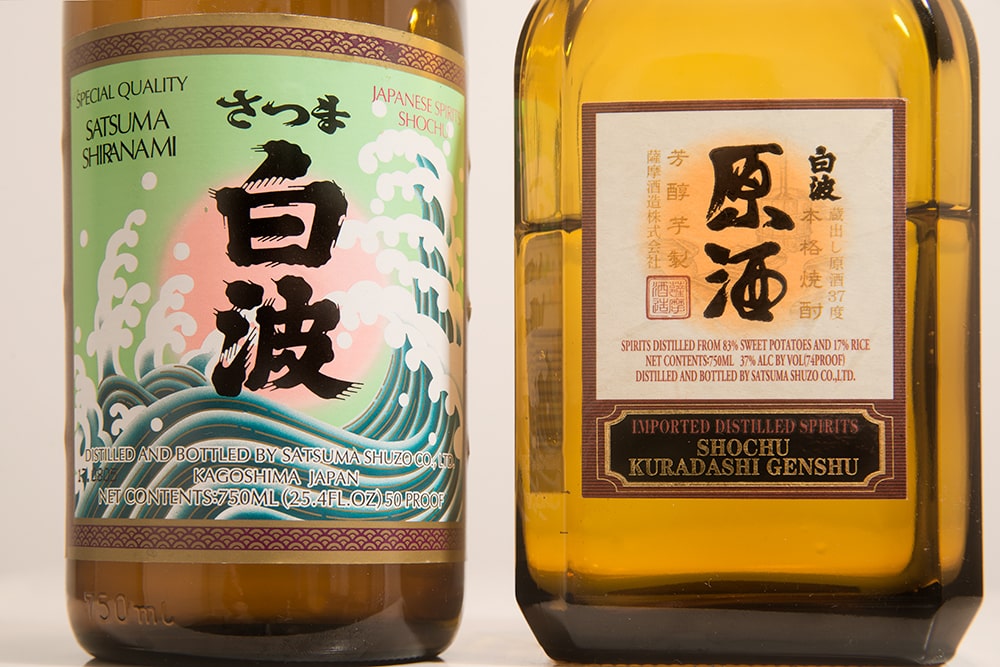
Sweet Potato Shochu: Imo 芋焼酎
Sweet potato shochu is often richer than rice or barley shochu. It can range from slightly sweet to dry. Some examples are fruity and floral, while others are funky and earthy.
Kagoshima is the most famous home of sweet potato shochu, which is often called Satsuma shochu. Sweet potato shochu is made in Miyazaki too.
Imo (ee moh) is “sweet potato” in Japanese. Sweet potato shochu is called imo-jochu.
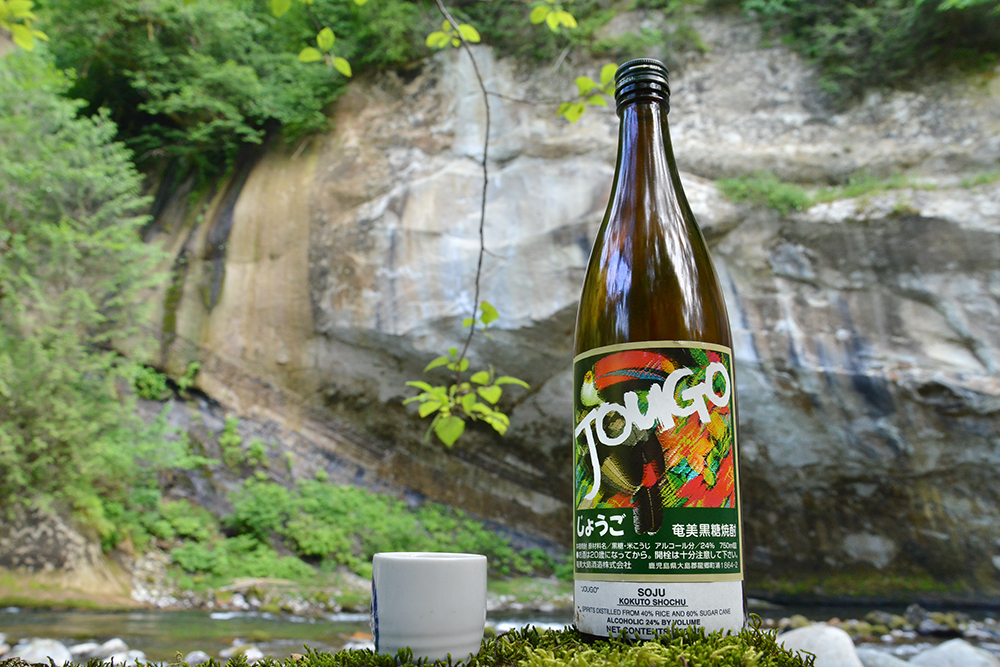
Brown Sugar Shochu: Kokuto 黒糖焼酎
The Amami Islands are the only place allowed to make shochu with saccharines (sugar, honey, etc.). Still, about 40% of Amami shochu consists of rice. The rest of the mash consists of sugarcane-derived kokuto sugar grown on the islands.
The flavor of brown sugar shochu is often rum-like, sweet, citrusy, and fruity. Other common notes include caramel apple, green apple, and molasses.
Kokuto (koh kuu toh) is Japanese for black sugar though it’s actually brown in color. Shochu made with it is sometimes called kokuto-jochu. Being strictly from the Amami Islands, it’s also often called Amami kokuto shocho. Furthermore, the locals sometimes refer to it as shima-zake, or “island sake.”
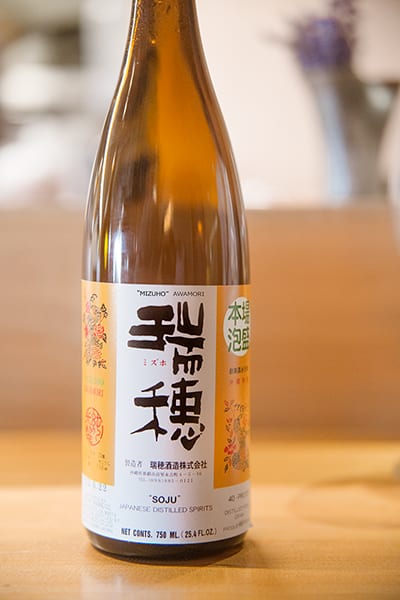
Shochu’s Older Sibling: Awamori
Awamori is often lumped together with shochu, as they have many things in common. However, some professionals consider awamori to be a separate category from shochu.
What is Awamori?
Before shochu, there was awamori. This native Okinawan spirit uses Thai rice and black koji to produce a rich and complex beverage. Awamori can be bottled fresh or aged. Aged (kuusu) awamori sometimes undergoes fractional blending, similar to Sherry’s Solera system.
Awamori often has a rich, earthy flavor. But there is a great deal of variety among brands. Traditional awamori brands like Mizuho are savory but also fruity and floral. Modern expressions of awamori are often light and clean. They have similar characters to Kumamoto rice shochu. Hana Shimauta is a popular modern awamori brand.
Is Shochu Strong?
Shochu is usually lighter than vodka or whisky, but stronger than sake. Most examples range between 20%-35% abv. The low average strength is so that one can enjoy shochu during a meal.
Honkaku shochu has a maximum strength of 45% abv, and korui shochu has a maximum of 36% abv.
How to Pronounce Shochu?
Shochu (shoo chuu) sounds similar to show and chew in English. Both syllables have equal weight.
How to Write Shochu, and What Does it Mean?
Shochu is written 焼酎. Every bottle of shochu will have these kanji. Shochu means burnt (焼) sake (酎). This implies the distillation of sake. The heating of sake in a closed vessel (still) will cause alcoholic vapor to rise, so it can be collected. This concentrates the alcohol and results in a spirit.
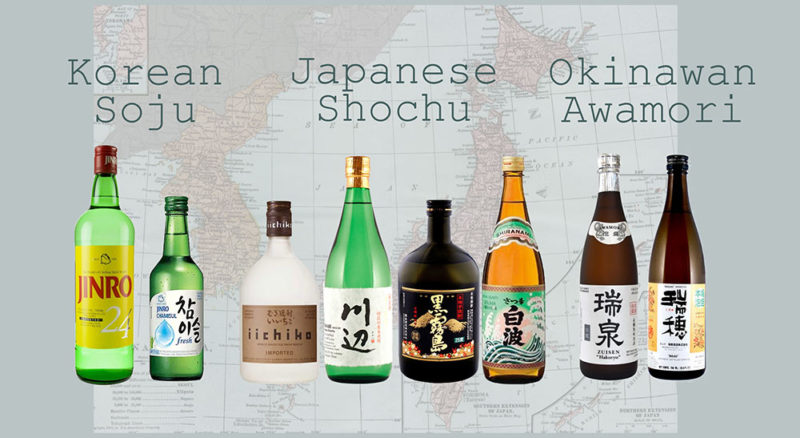
Are Shochu and Soju the Same Thing?
Shochu and Soju are not the same things, though they do share some common history. Some of the confusion in the US is California’s fault. No liquor license is needed to sell Soju under 24% abv. This led many Shochu labels to use the spelling, as well.
What is the Difference Between Sake and Shochu?
Sake (technically seishu) is a fermented beverage using rice, koji, yeast, and water. Shochu is a spirit, meaning it’s made by distilling a fermented alcoholic liquid into a more concentrated form.
The alcohol content of sake usually ranges from around 13.5%-19% abv. Shochu is stronger, typically ranging from 20-36% abv.
Shochu and Health
Shochu is often considered to be a healthy alcoholic beverage. But is shochu really that good for you?
Is Shochu Healthy?
Compared to many other forms of alcohol, shochu is said to be quite healthy. However, excessive consumption of alcohol is bad for your health. You’ll also want to avoid shochu while pregnant, nursing, or while driving.
There are a few reasons why shochu is healthier than other types of alcohol. One is that it’s low in calories. Shochu also contains no carbs, making it great for keto diets. Honkaku shochu also contains no sugar.
One last thing that is healthy about shochu (compared to other alcoholic beverages) is that it’s relatively heart-healthy. Shochu contains a high amount of urokinase, which helps to break apart blood clots. Red wine is considered to be great for this, as well, but shochu is better. This of course, is with modest consumption. Excessive drinking is bad for your heart.
Is Shochu Gluten-Free?
Shochu is technically gluten-free. All spirits are, in fact. The distillation process removes proteins and starches completely. Most shochus are gluten-free even before distillation, as sweet potato, rice, kokuto sugar, and buckwheat contain no gluten. However, some distilleries process barley in-house, so there is risk of cross-contamination into the final product.
Can Shochu Give You a Hangover?
Yes, shochu can give you a hangover! It is often stated that shochu is less likely to give drinkers hangovers, but this is only partially true. Drinking too much alcohol of any kind will result in a hangover.
Editor’s note: one of the worst hangovers of my life was from 24% abv sweet potato shochu.
Check out The Chemistry of a Hangover for more info about this sometimes painful subject.
Serving and Drinking Shochu
How to serve shochu is a common question. And really, there are no wrong answers. Below, we’ll get into the most common methods.
How to Drink Shochu?
There are a variety of popular ways to drink shochu. Its relatively low alcohol makes it perfect for serving neat. On the rocks is popular, as well.
Purists may prefer to add hot water (oyuwari), cold water (mizuwari), or mix with water and let sit overnight (maewari).
Finally, the chuhai (shochu highball) is an infinitely customizable and fun way to enjoy shochu.
Is Shochu Served Hot or Cold?
Shochu can be served cold, hot, or at room temperature. Serving warm (okan) is a traditional practice in southern Japan. You can add hot water (oyuwari) or heat the shochu without dilution. Adding cold water or ice can be more refreshing. Either way, be mindful not to overdilute.
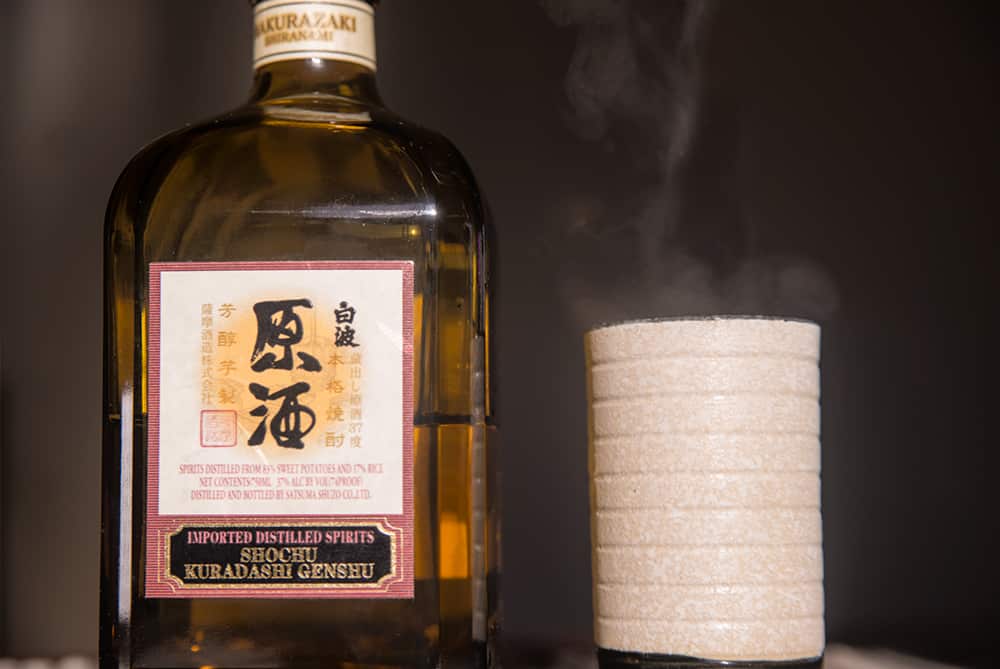
Oyuwari Shochu
Oyuwari is shochu mixed with hot water. This is a very popular serving method in Japan, especially with sweet potato shochu.
To make oyuwari, it’s best to add hot water to a cup first. This warms the cup and cools the water. The water in the tempered cup shouldn’t be above 176 degrees F. This is the boiling temperature of alcohol.
Pour the shochu into the cup of hot water. The ideal serving temperature of oyuwari is between 110 degrees F and 145 degrees F.
Most oyuwari enthusiasts prefer a ratio of shochu to water between 1:1 and 7:5. This depends on the alcoholic strength of the shochu, of course. Stronger genshu shochu is better with more water. Whereas, lighter shochu needs less dilution.
Finding Shochu
Outside of Japan, shochu can be very hard to find. Below are some tips on finding a bottle of your own.
Where to Buy Shochu?
If you’re in Japan, you’ll find shochu everywhere. In the US, it’s not so easy, however. Japanese markets, izakayas, and online retailers are the best places to look. Large liquor stores and other Asian markets may also carry shochu.
Check out our Shochu and Awamori Retail Guide to browse some of the top options.
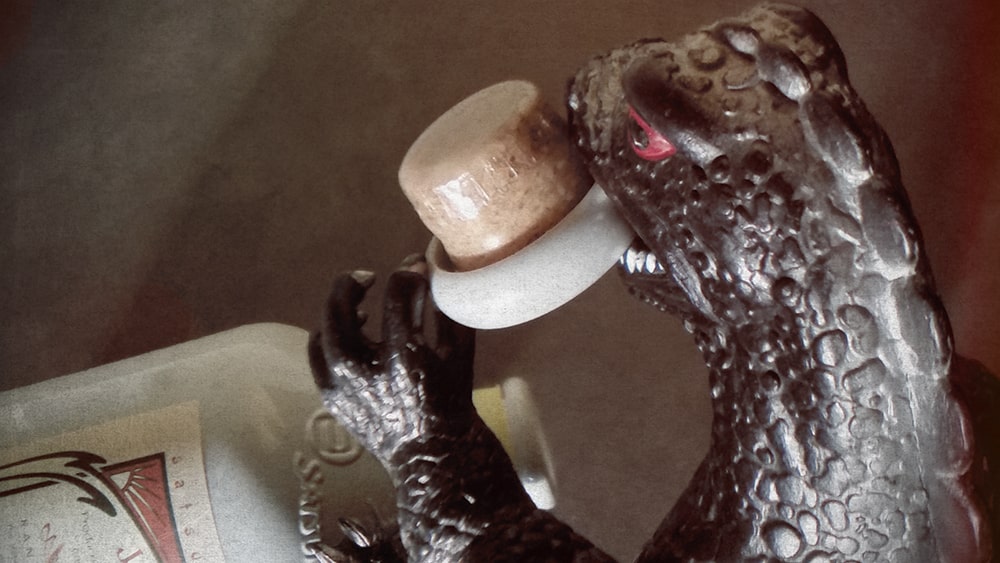
Share Your Thoughts on Shochu and Awamori
Shochu and awamori fans have some strong opinions on the subject. I’d love to hear what you think about these two classic Japanese spirits.
Do you have a favorite style? I’m a sucker for imo shochu, especially boozy genshu.
I’m also a big fan of drinking shochu neat and oyuwari. But I also make shochu cocktails all the time. Do you have a favorite way to drink shochu?
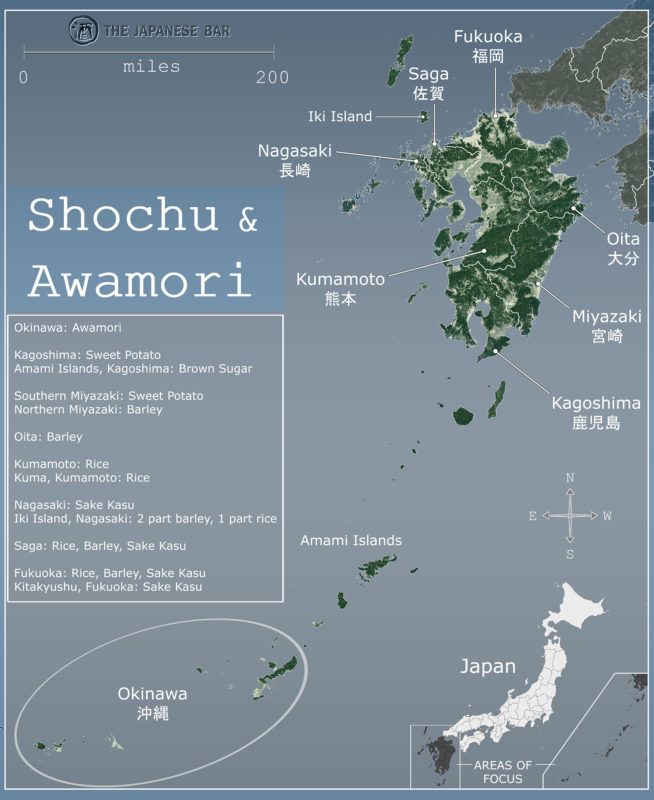
Sweet potato shochu sounds interesting, makes me wish I can teleport to Japan right now. Would love to taste their local beers and cuisines